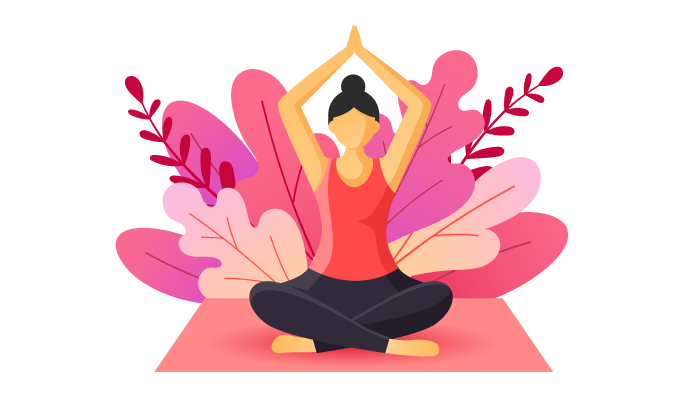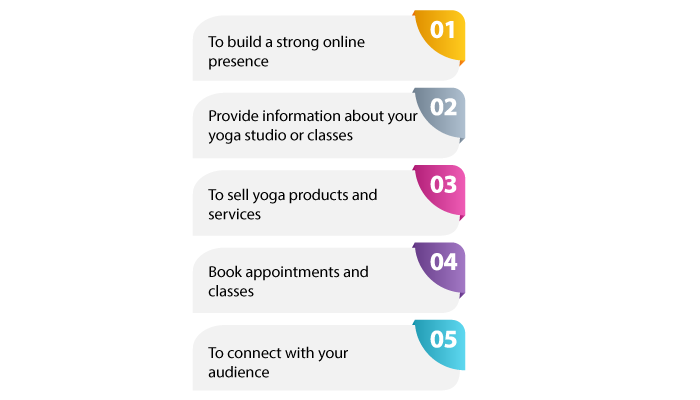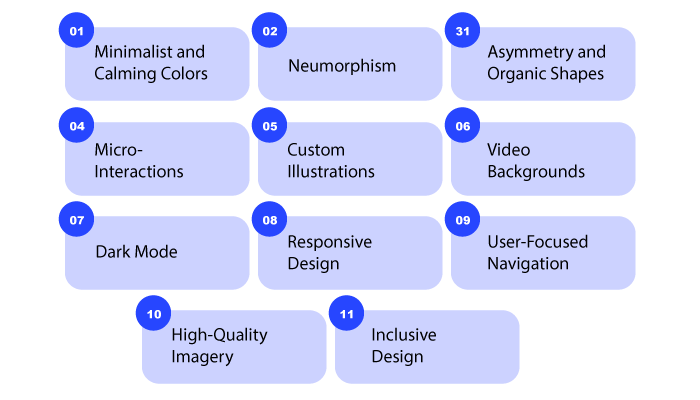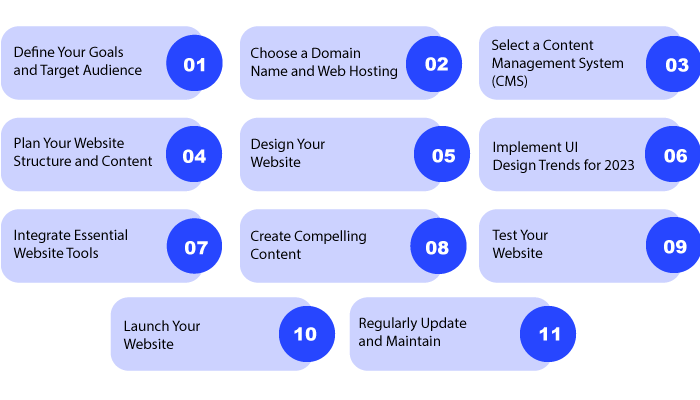Table of Contents
Yoga is a growing trend, and with that growth comes an increasing demand for yoga website design. If you are looking to create a yoga website that stands out from the crowd, you need to make sure your website design is on point.
Today, we go through Google to look for every product and service. Therefore, if you are a Yoga instructor or you owned your yoga studio, you must own your yoga website.
While you can promote yoga businesses on social media platforms, if you have a yoga website it’s like a cherry on cake for your yoga business.
With this, the revenue of the yoga industry in the US is 9.09 Bn USD according to Statista and the market share of yoga classes in the US yoga and pilates industry is 51.3 %.
By going through the report, you can see that yoga websites are a great way to promote your business and help people to connect around the world.
However, if you don’t have tech experience, then yoga website designing could be a daunting task. But don’t worry with this guide yoga website design becomes an easy task.
With this being said, let’s dive into the comprehensive guide to yoga website design in which we shall be covering topics such as:
Yoga Website Design 2023: Trends And Market Stats

The yoga industry is one of the most popular niches in the fitness and health industry. In 2023 its rapid growth shows no signs of slowing any time soon.
Here are some statistics on the Yoga industry.
- With more than 36 m Americanspracticing Yoga.
- Around 48,547 Yoga and Pilates studios are there in the U.S
- The US yoga industry earns $9.09 Bn in annual revenue
- The Allied market research shows that online yoga courses exhibit a higher compound annual growth rate of 3% between 2021-2027compared to offline courses.
Clearly, these reports are enough to get you started with Yoga website development. But before we dive let’s discuss What’s the point of having a yoga website in the next section.
Why Do You Need A Yoga Website For Your Business?

We live in a techno era, and technology is evolving at a fast pace every year. Before buying any products and services we check the service provider on Google.
Therefore, the website is no longer a competitive advantage rather it become a necessity for yoga instructors and tutors. With the best yoga website designs, yoga instructor can enhance their yoga businesses and get reach potential clients.
With this being said, let’s discuss the main reasons why yoga website design is a necessity for the yoga business.
To build a strong online presence
Businesses need to have a strong online presence. As w have said a well-designed yoga website can help you to build your brand, attract new customers, and generate leads.
Provide information about your yoga studio or classes
It is essential to provide information about the yoga studio or classes, it will increase reach among potential clients. Plus, it should include a blog and content that help people to learn more about yoga. And don’t forget to search for the best app designing agency to collaborate with within 2023.
To sell yoga products and services
Another great thing is if you sell yoga products or services your website can be a great way to reach new customers and make sales.
In addition, you can sell products directly on your website or you can use your website to drive traffic to the online store.
Book appointments and classes
Another reason for the yoga website can also be used to book appointments and classes. This can help you to streamline your booking process and make it easier for people to sign up for your classes.
To connect with your audience
The yoga website can also be used to book appointments and classes. By streamlining your booking process, you can make your classes easier to sign up for.
Yoga Website Design Ideas And Inspiration

To the point, if you want to get inspired a great place to start is looking at others’ websites for ideas.
However, modern UI design trends for 2023 are an excellent way to attract visitors and create a positive user experience on yoga websites. The following ideas and inspirations will help you design your yoga website:
Minimalist and Calming Colors
To create a calming effect, use a soft and earthy color palette. And creating a peaceful and serene environment requires incorporating shades of blue, green, and pastel colors.
Moreover, keeping a sense of tranquility requires avoiding overwhelming colors and opting for a minimalist approach.
Neumorphism
The UI design trend, Neumorphism, generates a soft, 3D-like appearance through subtle shadows and highlights. This design style can make your buttons, icons, and other interactive elements more attractive and welcoming.
Asymmetry and Organic Shapes
To give your website a natural flow, try using organic shapes and asymmetrical layouts. By using these design elements, you can emulate the fluidity and flexibility of yoga practices.
Micro-Interactions
Use micro-interactions for more engagement and feedback. For instance, use animated buttons, hovers, or subtle transitions to enhance user interactions.
Custom Illustrations
Use custom illustrations and graphics for yoga poses, meditation, and nature elements. Hand-drawn illustrations can add a personal touch and resonate with your audience.
Video Backgrounds
Use high-quality video backgrounds to highlight yoga practices, tranquil landscapes, or relaxing nature sights. Video backdrops can create a fascinating environment and immerse visitors in your website’s theme.
Dark Mode
Offer a dark mode option for your website to improve user experience, reduce eye strain, and align with the latest UI design trend of 2023. Dark mode can also create a sense of tranquility during late-night browsing.
Responsive Design
Ensure that your website is fully responsive to accommodate people on a variety of platforms, including PCs, tablets, and smartphones.
Although, mobile responsiveness is becoming increasingly important as more people visit websites via mobile devices.
User-Focused Navigation
Keep your website’s navigation simple and easy to use. For quick access to important parts such as classes, timetables, and contact information, use clear headings, dropdown menus, and a sticky navigation bar.
High-Quality Imagery
Use high-resolution images that depict yoga poses, serene landscapes, and people practicing yoga. High-quality visuals can leave a lasting impression on visitors and reinforce your website’s overall message.
Inclusive Design
Make certain that your website is inclusive and accessible to all users, regardless of ability. Provide alt text for photos, maintain appropriate color contrast, and make your website accessible to screen readers.
Essential website tools for Yoga website
| Tool Category | Tool Name | Purpose |
| Content Management System (CMS) | WordPress, Joomla, Drupal, etc. | Easily manage and update website content without coding. |
| Website Builder | Wix, Squarespace, Shopify, etc. | Create a website using intuitive drag-and-drop interfaces. |
| Web Hosting Service | Bluehost, SiteGround, HostGator, etc. | Host your website and make it accessible on the internet. |
| Domain Name Registrar | GoDaddy, Namecheap, Google Domains, etc. | Purchase and manage your website’s domain name. |
| Analytics Tools | Google Analytics, Matomo, etc. | Track and analyze website traffic, user behavior, and more. |
| SEO Tools | SEMrush, Moz, Ahrefs, etc. | Optimize your website for search engines and improve rankings. |
| Email Marketing Software | Mailchimp, ConvertKit, etc. | Build and manage an email list, and send newsletters, and campaigns. |
| Security Plugins | Wordfence, Sucuri (for WordPress) | Protect your website from hacking attempts and malware. |
| Image Editing Software | Adobe Photoshop, Canva, GIMP (free) | Create and edit images and graphics for your website. |
| Social Media Management | Hootsuite, Buffer, Sprout Social, etc. | Manage and schedule social media posts and engagements. |
| Backup and Recovery | UpdraftPlus (for WordPress), hosting backups | Back up website data to prevent data loss. |
| Live Chat Support | Intercom, LiveChat, Drift, etc. | Provide real-time support and engage with website visitors. |
A Step-By-Step Guide To Start Yoga Website Design

Starting a yoga studio website involves several steps to ensure you create a well-structured and visually appealing platform. Here’s a step-by-step guide to help you get started:
Define Your Goals and Target Audience
By determining what you want to achieve with your yoga website, such as promoting yoga classes, selling products, or sharing knowledge. It will clarify your website’s purpose and objectives.
Also don’t forget to identify your target audience, including potential yoga practitioners, students, or anyone interested in wellness and yoga-related topics.
Choose a Domain Name and Web Hosting
Now this step involves selecting a domain name that reflects your yoga brand or business. Ensure it’s easy to remember, spell, and represents the essence of your website.
Moreover, choose a reliable web hosting service that offers good performance, security, and customer support.
Select a Content Management System (CMS)
Some of the best yoga sites choose a suitable CMS like WordPress, Joomla, or Drupal. WordPress is popular and user-friendly, making it an excellent choice for beginners.
Plan Your Website Structure and Content
This is the most important step to create a sitemap outlining the main pages and navigation of your yoga website. Include common pages for a yoga website may include Home, About, Classes, Schedule, Blog, Contact, etc.
Together with it plan your content, including high-quality images, videos, and written content about yoga, meditation, and wellness.
Design Your Website
Choose a visually appealing and calming color scheme that aligns with the yoga theme. Utilize soft and earthy tones. Plus, don’t forget to opt for a minimalist design approach, keeping the layout simple, clean, and easy to navigate.
Additionally, incorporate images and illustrations related to yoga poses, nature, and wellness.
Implement UI Design Trends for 2023
Incorporate UI design trends for 2023, such as neumorphism, asymmetry, organic shapes, micro-interactions, and dark mode.
On the other hand, use video backgrounds to showcase yoga practices or serene landscapes, enhancing the user experience.
Integrate Essential Website Tools
Install essential website tools like Google Analytics for tracking website performance, SEO plugins to optimize search engines, and security plugins. They are necessary for website protection.
Create Compelling Content
Write informative and engaging content about yoga, health, meditation, and wellness topics. Also, include content that showcases your expertise and benefits your target audience.
Additionally utilizing images and videos to visually enhance your content.
Test Your Website
This is the most crucial part of the yoga website design. Thoroughly conduct testing to ensure your website functions properly on different browsers and devices. And check for any broken links, errors, or design inconsistencies.
Launch Your Website
Once you’ve completed all the steps and tested your website, it’s time to launch it to the public.
By promoting your website through social media, email marketing, and any other relevant channels to attract visitors.
Regularly Update and Maintain
Last but most important keep your website updated with fresh content, upcoming yoga classes, and events.
Moreover, regularly maintain your website, ensuring plugins, themes, and security measures are up to date.
Conclusion
Whether you design yoga instructor website or yoga teacher website this ultimate guide to yoga website design offers valuable insights.Plus, step-by-step instructions for creating an alluring and user-friendly yoga website.
By incorporating calming design elements, essential website tools, and optimizing for SEO, you can attract your target audience and promote your yoga offerings effectively.
If you need further assistance with website design or other projects, consider collaborating with top product design companies to work with, which can elevate your online presence and help achieve your goals. Remember to continually update and improve your website to provide the best experience for your visitors and clients. If you want to know more feel free to contact us.
FAQ
The Ultimate Guide To Yoga Website Design is a comprehensive blog providing step-by-step instructions and inspiration to create a visually appealing and effective yoga website.
A yoga website helps promote your yoga business, classes, and services, attracting potential clients and providing a platform to share valuable content and information.
Popular CMS options include WordPress, Joomla, or Drupal, offering user-friendly interfaces and flexibility for managing your yoga content.
Utilize soft color palettes, minimalistic layouts, and imagery related to yoga poses and nature to create a tranquil and visually pleasing atmosphere.
Essential tools include a CMS like WordPress, web hosting, analytics (e.g., Google Analytics), and SEO tools (e.g., SEMrush) to optimize performance and user experience.
Yes, consider using Grammarly, Hemingway Editor, LanguageTool, ProWritingAid, or Slick Write for free writing assistance with limited features.
Focus on relevant keywords, optimize meta tags, create quality content, build backlinks, and ensure your website is mobile-friendly for better search engine rankings.
Include information about your yoga classes, schedules, instructor profiles, a blog with yoga tips, and resources on meditation and wellness.





No Comments
Comments are closed.